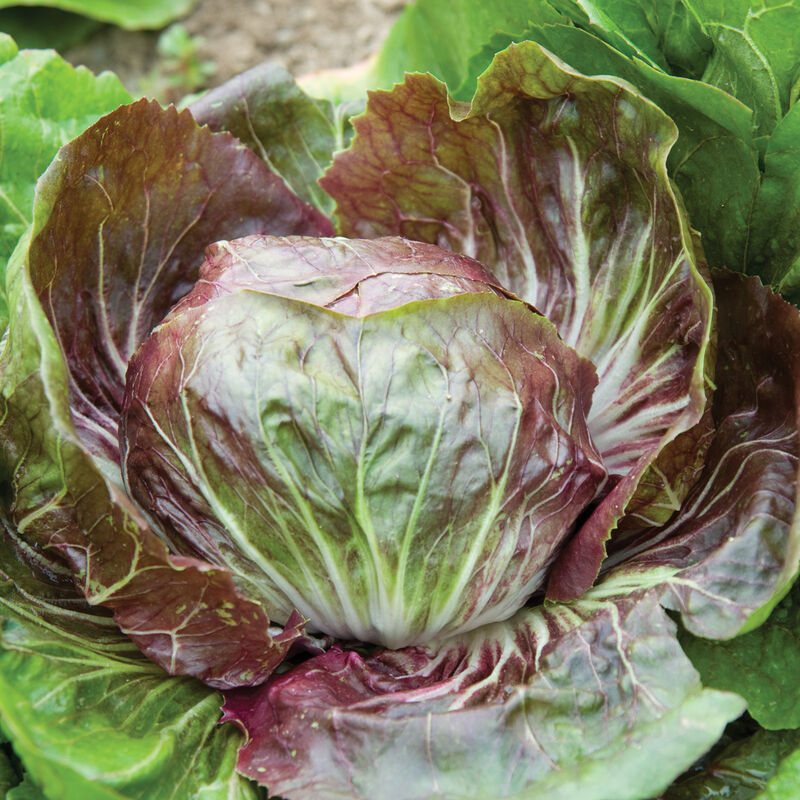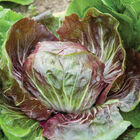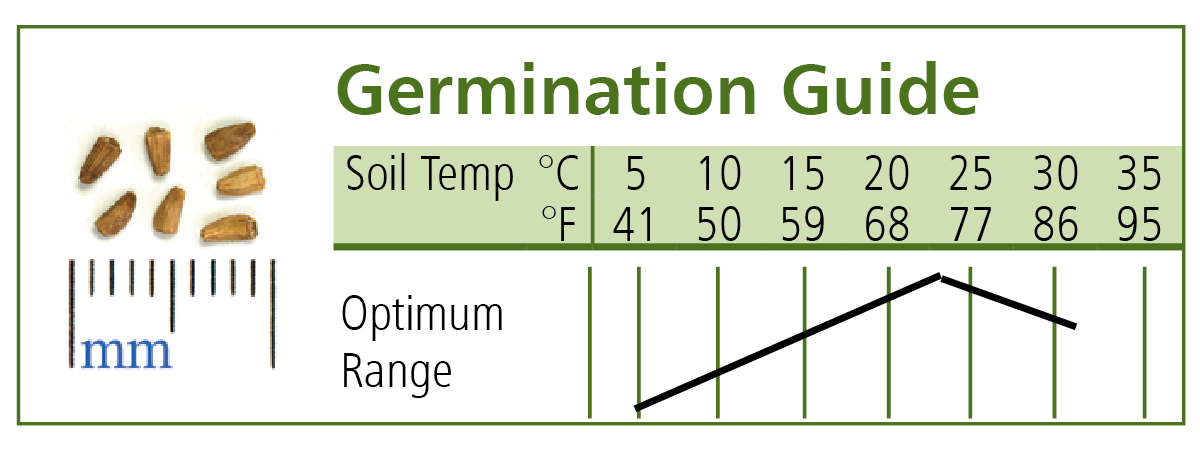Indigo (F1) Pelleted Radicchio Seed
Indigo (F1) Pelleted Radicchio Seed
Excellent uniformity and high yield potential for summer harvests. Conventional seed with NOP-compliant pelleting.
Indigo has been the most reliable radicchio in both our hot- and cool-weather trials. It is remarkably sure-heading, very tolerant to tipburn, and resistant to bottom rot. The firm, 4–5" diameter heads are a nice burgundy color with good flavor. For spring, summer, and fall production.Specs:
- This product does not ship to the following countries: United Arab Emirates, Austria, Australia, Barbados, Belgium, Bulgaria, Bermuda, Bahamas, Switzerland, Cyprus, Czech Republic, Germany, Denmark, Estonia, Spain, Finland, France, United Kingdom, Greece, Hong Kong, Croatia, Hungary, Ireland, Iceland, Italy, Japan, Republic of Korea, Kuwait, Cayman Islands, Lithuania, Luxembourg, Latvia, Malta, Netherlands, Norway, New Zealand, Oman, Poland, Portugal, Qatar, Romania, Saudi Arabia, Sweden, Singapore, Slovenia, Slovakia, San Marino, Thailand, Trinidad and Tobago, Taiwan, Ukraine.
CULTURE:
For North American production, these varieties are vast improvements over older types, but are still not perfectly uniform or completely predictable. Although bred for specific seasons, it is still best to trial more than one variety, using succession plantings to determine which one suits your conditions.Radicchio is hardy and can be planted as early as the soil can be worked. It is a cool weather crop and grows best at temperatures of 60–65°F (15.5–18.3°C). Careful variety selection is important for hot weather plantings. Sow every 3 weeks for a continuous supply of fresh radicchio.
Pelleted seed requires a little extra attention when it comes to watering, as it performs best with consistent, moderate soil moisture throughout the germination period. An initial watering will split or dissolve the pellet, but if the soil is allowed to dry out before the germination period is over, the seed may receive insufficient moisture for optimal germination.
THERMAL DORMANCY:
Radicchio seed can enter thermal dormancy when exposed to high temperatures above 77°F (25°C). Optimum germination results at soil temperatures of 60–68°F (15.5–20°C).TRANSPLANTING:
Sow in flats, 1 seed/in., or in ¾" plug trays, barely covering seeds with fine vermiculite, 3–4 weeks before transplanting outdoors. Shade the flats on sunny, warm days if necessary to keep the soil surface cool, below 75°F (24°C), until germination. If sowing into flats, transplant 1–2" apart into flats, pots, or cell-type containers about 2 weeks later. Harden seedlings by reducing water and temperature for 2–3 days before planting outdoors. Properly hardened transplants can survive temperatures as low as 20°F (-6°C).Transplant 8" apart in rows 18" apart. Transplant shallowly so that the base of the plant will be slightly above the soil to discourage bottom rot.DIRECT SEEDING:
Seeds will germinate from 41–85°F (5–29°C), but the highest germination percentage will occur around 75°F (24°C), depending on the variety and seed lot. Sow seeds 2–3" apart, rows 12–18" apart. Cover seed lightly, about ⅛", and firm soil gently. Thin to 8–12" apart; thinnings may be transplanted. Dry soil must be watered to ensure coolness and moisture, and for uniform germination.NOTE:
Radicchio grows best in cool or mild weather, i.e. fall, winter, and spring. Summer crops can be successful if nights are cool (below 60°F/16°C).DAYS TO MATURITY:
From date of cool-weather, spring transplanting. Subtract 10–14 days for late spring or early summer, warm-weather transplanting. Add about 14 days for direct seeding.TRANSPLANTS:
Avg. 500 plants/M (2 seeds per cell thinned to one seedling).PELLET STORAGE:
Pelleting offers many advantages, but the pelleting process also shortens the shelf life of the seed. We recommend using pelleted seed within one year of purchase. If you need to store pelleted seeds until planting, protect them from heat and humidity in a cool, dark, dry place. If you prefer to store your seed in the refrigerator, be sure to place the seed in an air-tight container to protect it from fluctuations in humidity.AVG. SEEDING RATE:
130,000 pellets/acre at 6 pellets/ft. in rows 24" apart or 6,000 pellets/1,000ft. row.PELLET SIZE:
13.0.SEED SPECS:
PELLETS/OZ.: 940–1,250 (avg. 1,100).PACKET:
200 pellets sows 33' at 6 pellets/ft.Johnny's is committed to your success, every step of the way.
We want you, our customer, to be 100% satisfied with all of our seeds, tools, and supplies.
If anything you purchase from us proves unsatisfactory, we will either replace the item or refund the purchase price.





